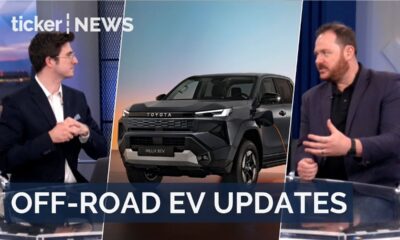Rico Merkert, University of Sydney
It is finally happening. After five years of being a private company, Virgin Australia will relist on the Australian Securities Exchange (ASX) on June 24. The company is expected to raise A$685 million through the initial public offering (IPO).
So, who will benefit from Virgin Australia’s return to the share market? Having paid $3.5 billion for the bankrupt carrier back in 2020, private equity firm Bain Capital will be the most immediate winner.
Earlier this year, Bain had sold 25% of the company to Qatar Airways. Now, with the IPO, Bain will reduce its stake from about 70% down to 40%. Most of the $685 million raised will go straight to Bain.
With Virgin’s anticipated market capitalisation close to $2.3 billion and enterprise value of reportedly up to $3.6 billion, it is now evident that Bain has – with Jayne Hrdlicka at the helm of the airline – not only managed to turn the company around, but to also profit nicely from doing so.
Without Bain’s rescue at the beginning of the pandemic (which was catastrophic for airlines globally), the situation may have become quite detrimental for travellers. It also avoided having the Australian taxpayer foot the bill for a bailout.
Will the airline’s customers be better off after this? It will depend on how much, if anything, Bain chooses to reinvest in Virgin after this share offering is over. But Virgin has also recorded substantial recent profits, some of which are expected to be spent on newer aircraft and improved services.
Stronger competition for Qantas?
Looking at the strategies of both Virgin Australia and its biggest competitor, Qantas, in recent years, it seems both have learned to love playing the duopoly game.
Based on our own calculations, Virgin controls roughly 33% of Australia’s domestic seat capacity and the Qantas group (which includes Jetstar) much of the rest on the country’s core flight network.
In the 2010s, the two airlines were out-competing themselves in adding capacity to the market, which drove down yields (or revenue per passenger) and nearly killed Virgin Australia 1.0.
Now, Qantas and Virgin have new chief executives who understand both airlines can be very profitable if they show some (capacity) discipline in how many seats they create and sell.
Better services
For that reason, it’s likely not much will change in terms of competition, at least in the domestic market. But this is only true as far as capacity is concerned.
It seems reasonable to assume Virgin’s recent profits and any funds from the capital raise will only be used to support future growth if it is profitable. The majority of the profits will likely go towards fleet renewal and improvement of the airline’s product.
For consumers, this wouldn’t necessarily mean lower airfares in the domestic market. But it would mean newer aircraft and enhanced services, which is a positive for both flyers and the environment.
International departures
Virgin Australia will become a more formidable competitor to Qantas, thanks to its newly formed relationship with international partner Qatar Airways and the additional cash from relisting.
It will be interesting to observe what Qatar will do next and whether a new player – perhaps Singapore Airlines – will enter the scene and take a stake in the airline once Virgin Australia is trading publicly again.
It would not be the first time an international airline has taken a stake in Virgin Australia, and could create some interesting dynamics.
Another beneficiary is Virgin Australia’s management team, who’ve been somewhat shackled by the priority of getting the IPO off the ground. The IPO will free up management to deploy resources towards more longer-term priorities.
Many will see a significant payday – it’s estimated staff are sitting on shares that could soon collectively be worth $180 million.
Why now?
Bain Capital has timed this IPO carefully. Virgin Australia has (in tandem with Qantas) produced a stellar financial performance in the last financial year. It may deliver an even better one in the current reporting period.
To maximise returns, it is likely Bain did not want to waste the opportunity to capitalise on the moment. Global markets are still full of volatility and geopolitical uncertainty. What may diminish is the financial performance of the core business Bain Capital is trying to sell.
At $2.90 a share, Virgin Australia will have a price-to-earnings ratio (used to assess how relatively expensive a share price is) of seven times its expected earnings this financial year. This is lower than Qantas’ ratio of ten times expected earnings this financial year.
Profits are likely to remain high this year, with continuing strong demand, high yields and low jet fuel prices. The brokers and underwriting investment banks will use this to sell the story.
IPOs can sometimes deliver those already holding shares in a company significant day-one windfall profits. In this case, however, Bain’s expertise in the venture capital market means it is unlikely to leave any money on the table.
One may also argue while Virgin appears to be priced at a discount compared to Qantas, there may be legitimate reasons for the price differential, such as Qantas’ very profitable loyalty business.
Given uncertainties around demand and geopolitical tensions, there is no guarantee the share price of Qantas will remain at record highs for too long, which means the opportunity to present Virgin shares as a bargain may be short-lived.
In the long term, it is widely agreed airlines are by definition volatile investments and not necessarily something the average investor should have in their portfolio.
Moving forward
Symbolically, the decision for Virgin to use a new stock ticker – VGN instead of the old VAH – may avoid bringing back bad memories.
Five years can be a lifetime in aviation, but maybe not to bond holders who got just 10 cents in the dollar and shareholders (including the large airline partners who held equity stakes) who got nothing when the airline collapsed in 2020.
From a strategy perspective, it will be important for management to avoid history repeating itself with international airlines buying into Virgin and securing board seats.
This can be one way of influencing the strategy of the carrier’s domestic arm to funnel more passengers to their own international flights.
It is positive, for both Virgin Australia and the Australian aviation industry, that Bain Capital appears set to pull this off and that the revitalised airline is now truly Virgin Australia 2.0.
Clarification: this article has been amended to clarify that most of the $685 million raised will go to Bain Capital.
Rico Merkert, Professor in Transport and Supply Chain Management and Deputy Director, Institute of Transport and Logistics Studies (ITLS), University of Sydney Business School, University of Sydney
This article is republished from The Conversation under a Creative Commons license. Read the original article.


























